In the Dungeons & Dragons fantasy role-playing game, psionics are a form of supernatural power similar to, but distinct from, arcane and divine magic.
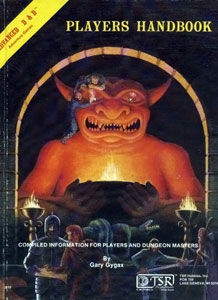
The Player's Handbook is the name given to one of the core rulebooks in every edition of the fantasy role-playing game Dungeons & Dragons (D&D). It does not contain the complete set of rules for the game, and only includes rules for use by players of the game. Additional rules, for use by Dungeon Masters (DMs), who referee the game, can be found in the Dungeon Master's Guide. Many optional rules, such as those governing extremely high-level players, and some of the more obscure spells, are found in other sources.

The Dungeon Master's Guide is a book of rules for the fantasy role-playing game Dungeons & Dragons. The Dungeon Master's Guide contains rules concerning the arbitration and administration of a game, and is intended for use by the game's Dungeon Master.
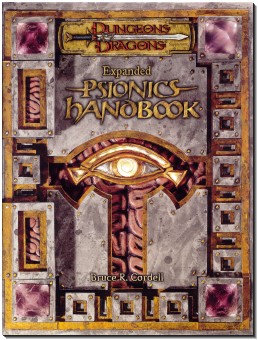
The Expanded Psionics Handbook is a sourcebook written by Bruce Cordell for the 3.5 edition of the Dungeons & Dragons fantasy roleplaying game that contains rules and options for integrating psychic powers into the game. Along with its predecessor, the Psionics Handbook, the Expanded Psionics Handbook expands and adapts the psionics concept with a new emphasis on balance and playability.

The Manual of the Planes is a manual for the Dungeons and Dragons role-playing game. This text addresses the planar cosmology of the game universe.

Oriental Adventures is the title shared by two hardback rulebooks published for different versions of the Dungeons & Dragons (D&D) fantasy roleplaying game. Each version of Oriental Adventures provides rules for adapting its respective version of D&D for use in campaign settings based on the Far East, rather than the medieval Europe-setting assumed by most D&D books. Both versions of Oriental Adventures include example campaign settings.

The Dungeon Master's Guide II is a book of rules for the 3.5 edition of the Dungeons & Dragons seminal fantasy role-playing game.
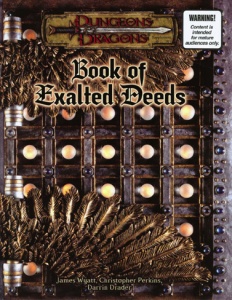
The Book of Exalted Deeds is an optional sourcebook for the 3.5 edition of the Dungeons & Dragons role-playing game published by Wizards of the Coast (WotC) in 2003. It provides supplementary game material for campaigns involving characters of good alignment. Within the game, there is also a powerful magical artifact of the same name.

Complete Divine is a supplemental rulebook for the 3.5 edition of the Dungeons & Dragons fantasy role-playing game published by Wizards of the Coast. It replaces and expands upon earlier rulebooks entitled Masters of the Wild and Defenders of the Faith, as well as being a catchall for anything that does not fit into Complete Adventurer, Complete Arcane, Complete Warrior, or Complete Psionic.
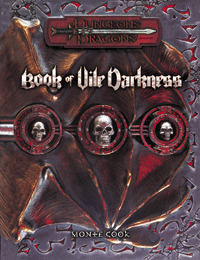
Book of Vile Darkness is an optional supplemental sourcebook for the 3rd edition of the role-playing game Dungeons & Dragons. The book was written by Monte Cook and published by Wizards of the Coast on October 1, 2002. Described as a "detailed look at the nature of evil," it was the first Dungeons & Dragons book labelled for mature audiences.

Savage Species is a sourcebook for use as a supplement in the 3rd edition of the Dungeons & Dragons game, detailing the use of monstrous races as PC races.

Complete Psionic is a supplemental rulebook for the 3.5 edition of the Dungeons & Dragons role-playing game published by Wizards of the Coast and released in April 2006. It is the first 3.5 edition supplemental rulebook published by Wizards of the Coast which focuses on psionics since the Expanded Psionics Handbook.

The Draconomicon is the title for several optional sourcebooks for the Dungeons & Dragons role-playing game, providing supplementary game mechanics for dragons specifically. Different Draconomicon books have been issued for the 2nd, 3rd, and 4th editions of the Dungeons & Dragons game. The Latin-inspired name of the books loosely translates as "Book of Dragon Names".

Complete Mage is a supplemental rule book for the 3.5 edition of the Dungeons & Dragons role-playing game. It is effectively the sequel to Complete Arcane.

The Psionics Handbook is a sourcebook published by Wizards of the Coast in 2001 for the 3rd edition of the Dungeons & Dragons fantasy role-playing game. It contains a multitude of rules and options for integrating psionic powers into the D&D game.
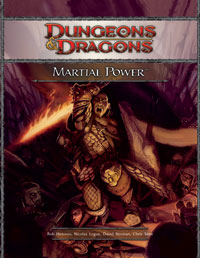
Martial Power is a supplement for the 4th edition of the Dungeons & Dragons fantasy role-playing game. It contains additional options and rules for fighters, rangers, rogues, and warlords, including new builds for each class to further customize a character, such as the "beastmaster ranger," "bravura warlord," and "resourceful warlord".
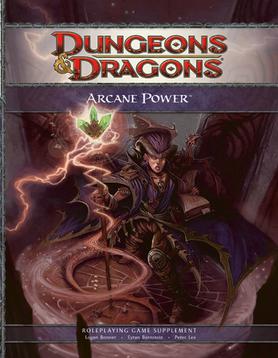
Arcane Power is a supplement for the 4th edition of the Dungeons & Dragons fantasy role-playing game.

Divine Power is a supplement for the 4th edition of the Dungeons & Dragons fantasy role-playing game.

Wizards Presents: Races and Classes is an accessory released as a preview for the 4th edition of the Dungeons & Dragons fantasy role-playing game, published in December 2007.

Martial Power 2 is a supplement published by Wizards of the Coast (WotC) in 2010 for the 4th edition of the Dungeons & Dragons fantasy role-playing game. The book is a sequel to 2008's Martial Power; like its predecessor, Martial Power 2 provides new options for four specific character classes, as well as some general martial variants.


















